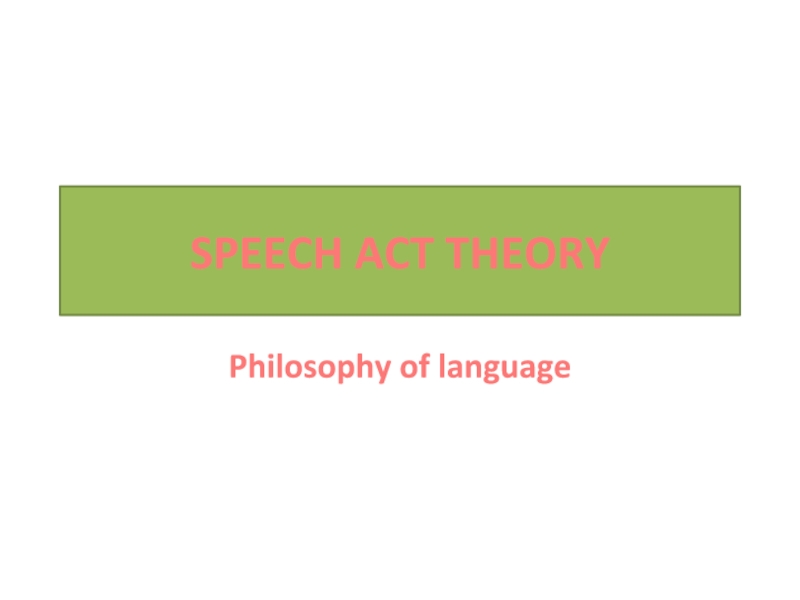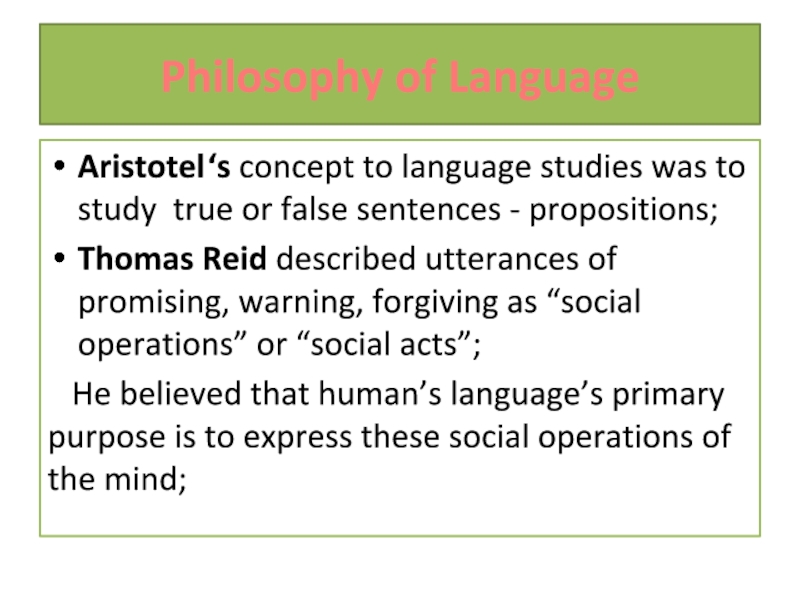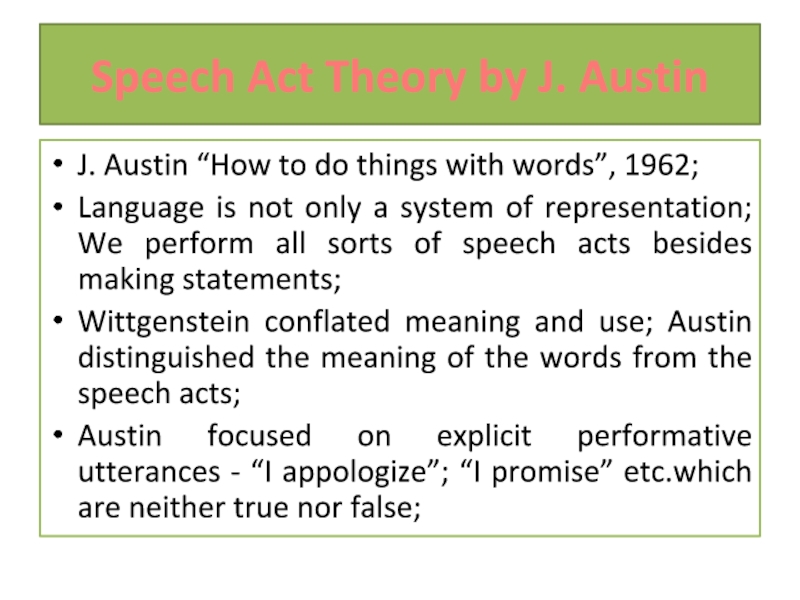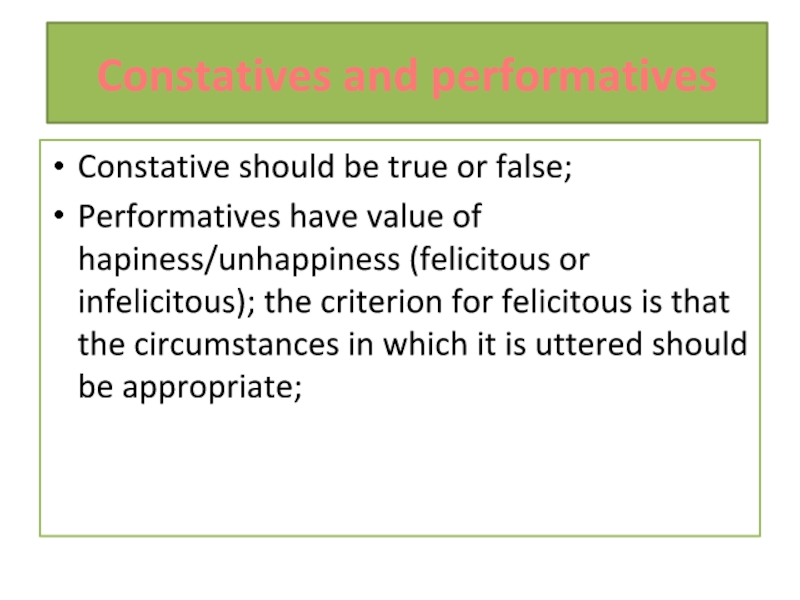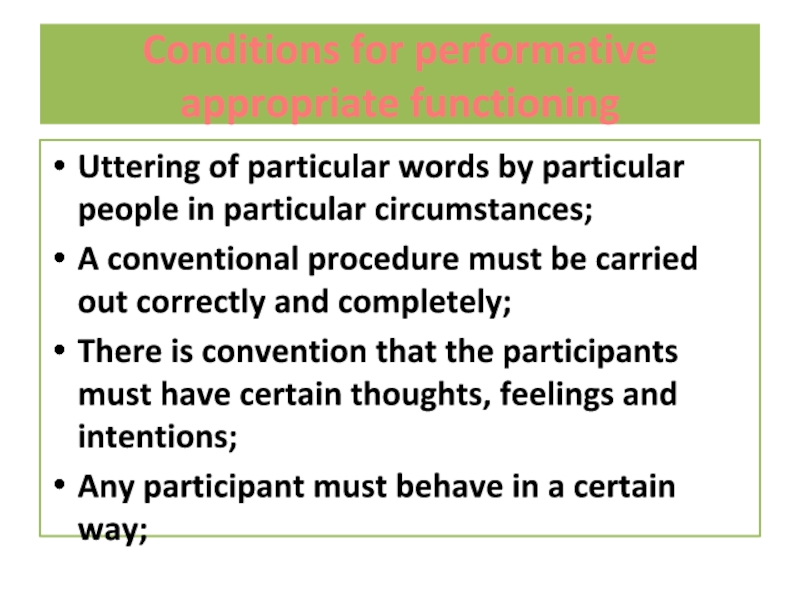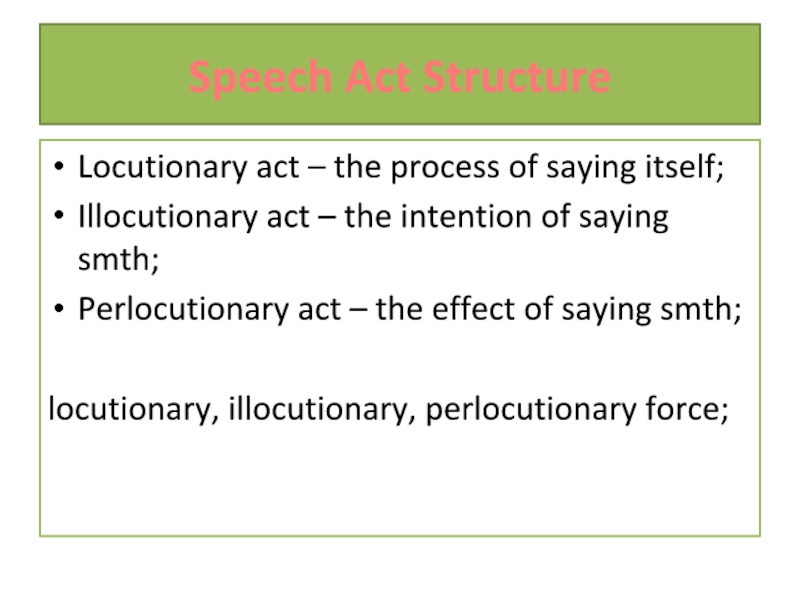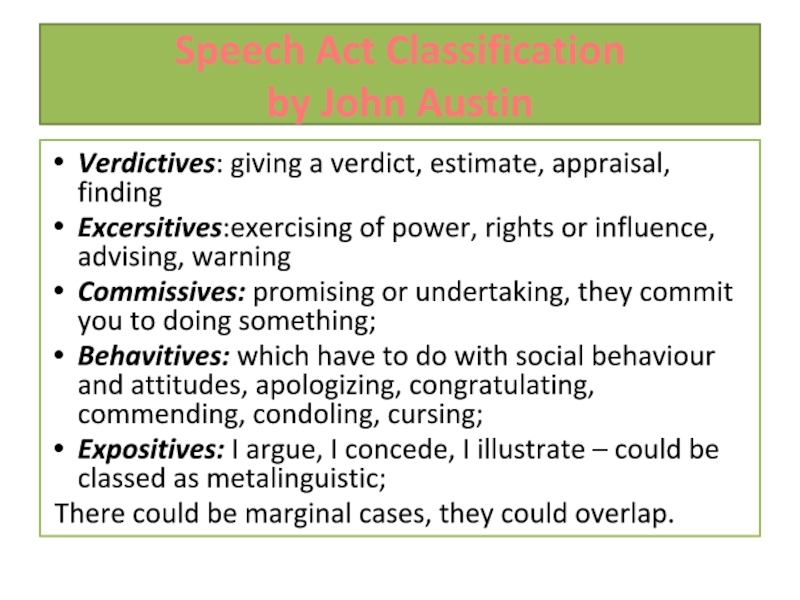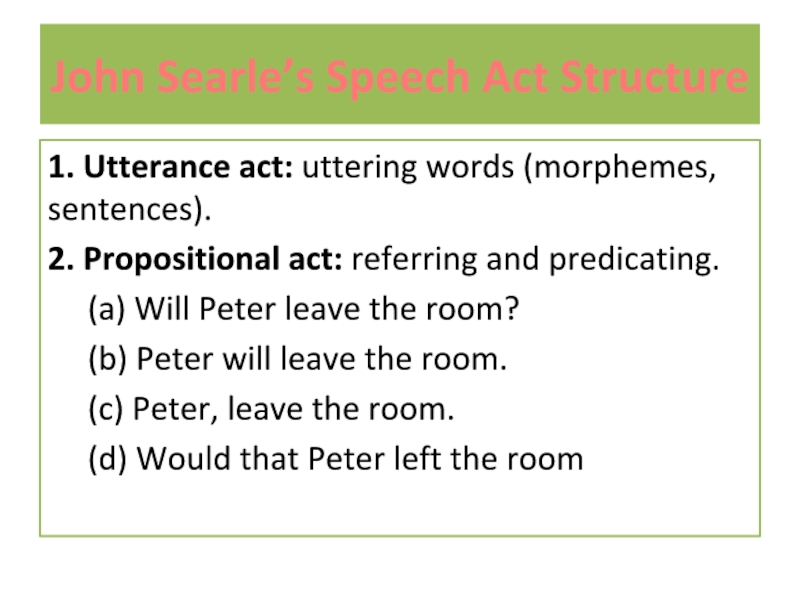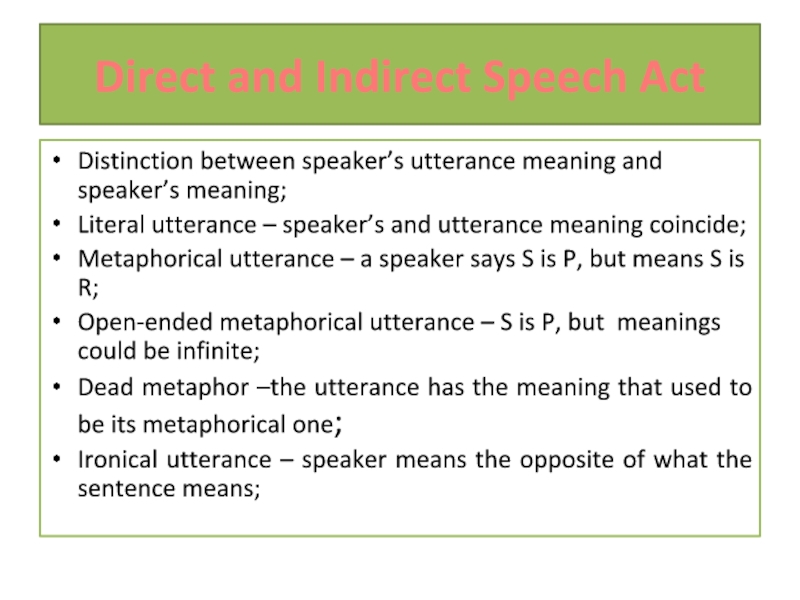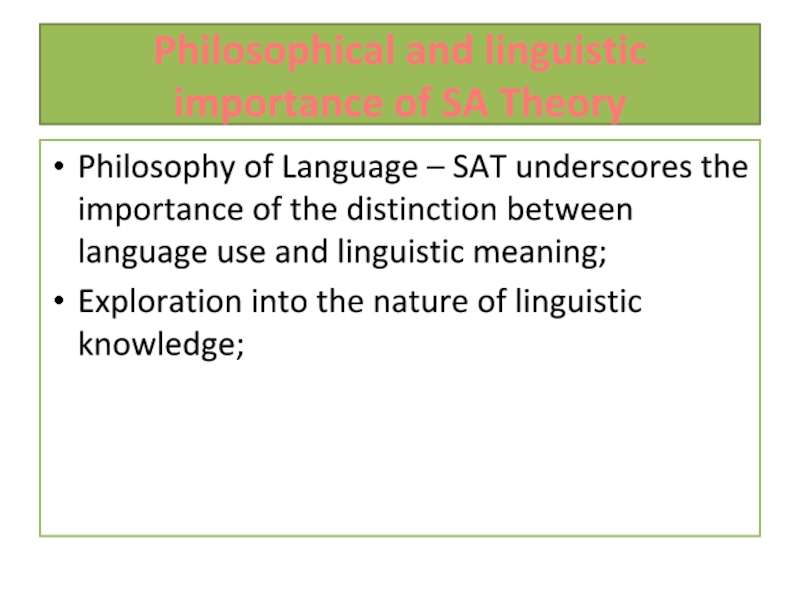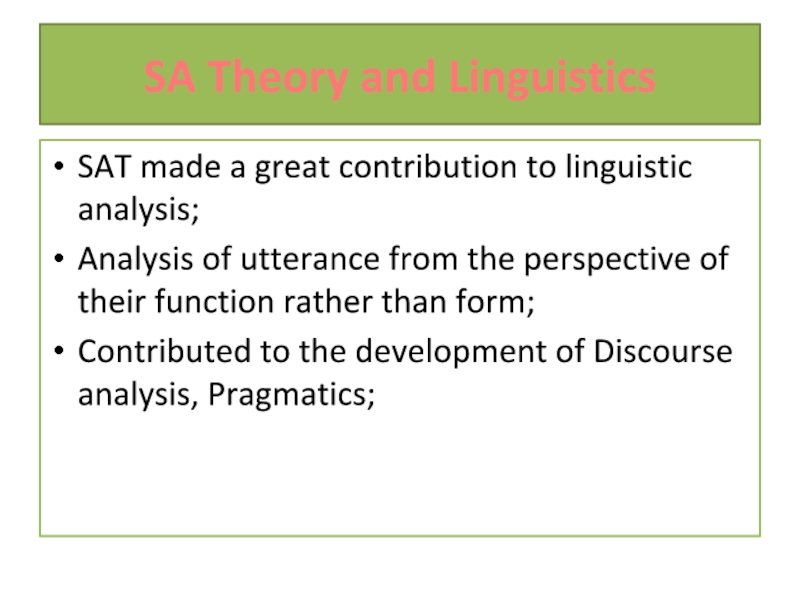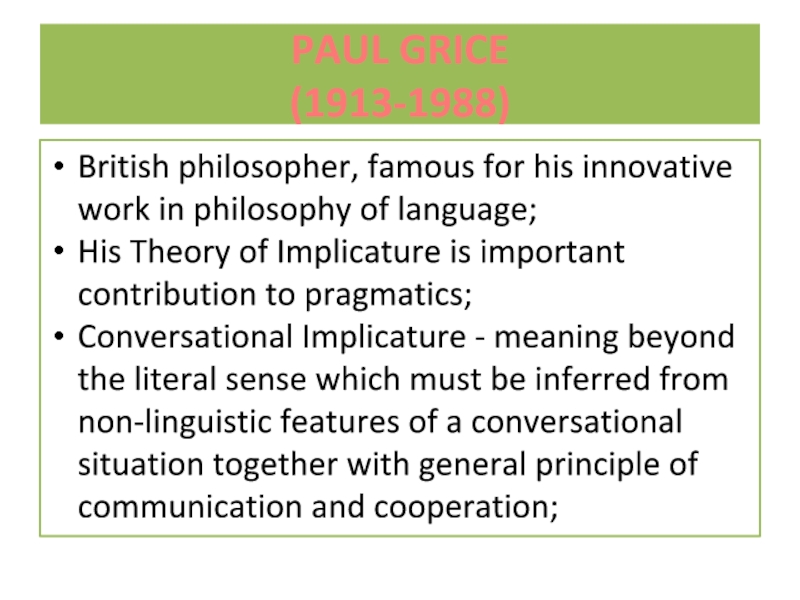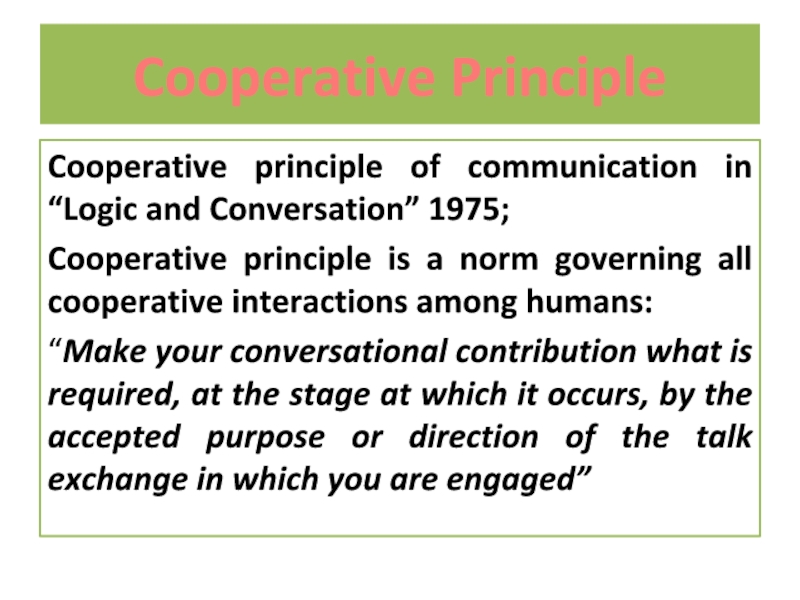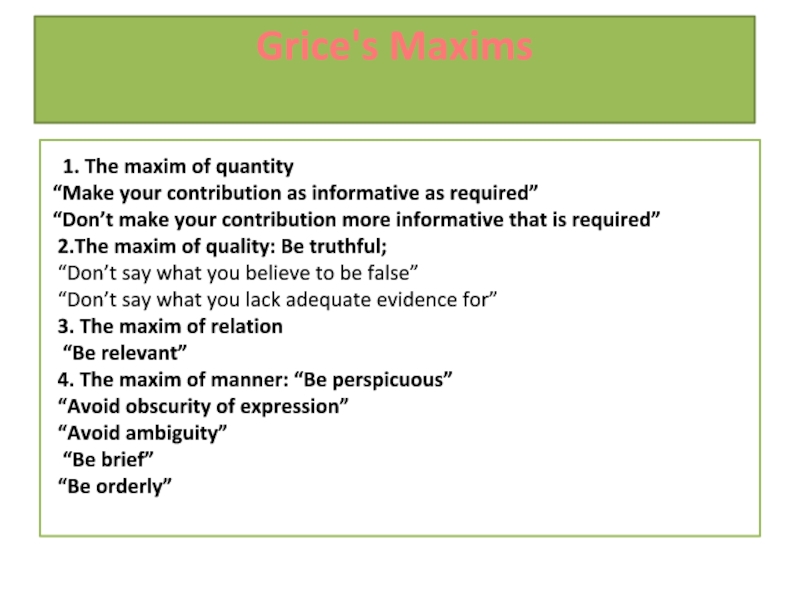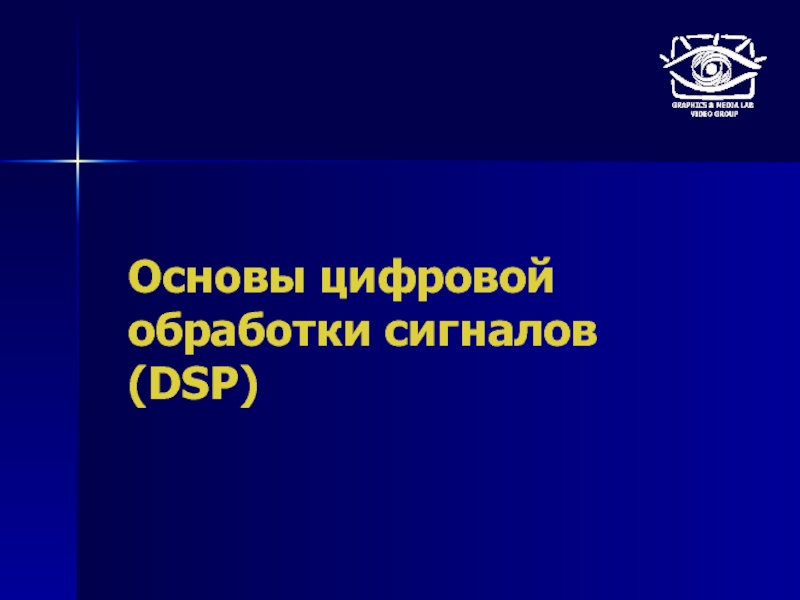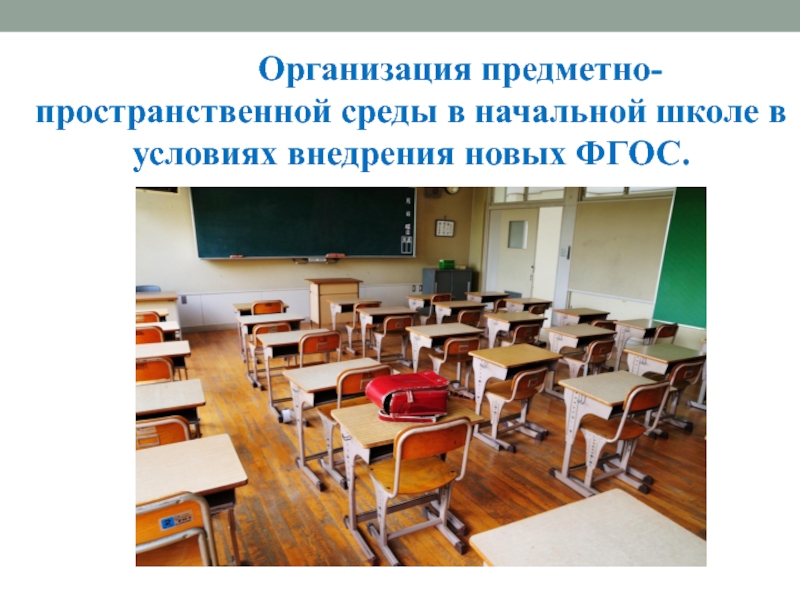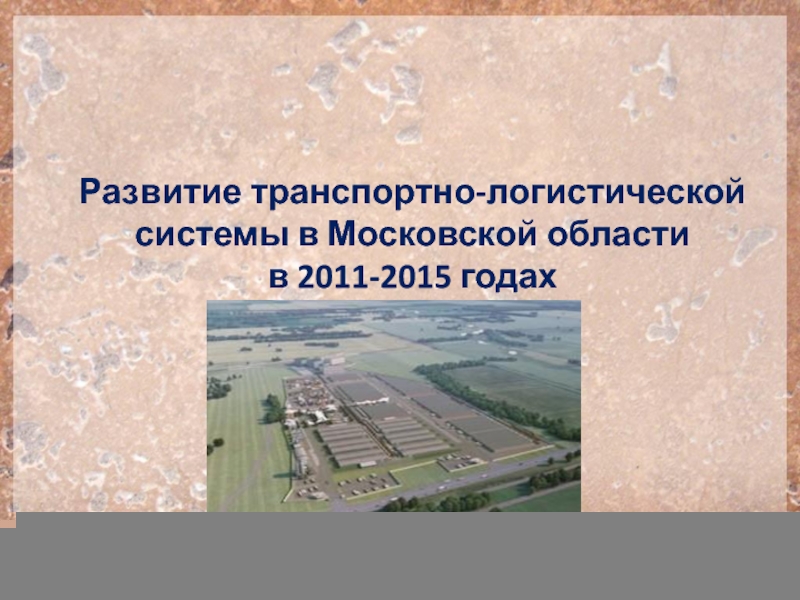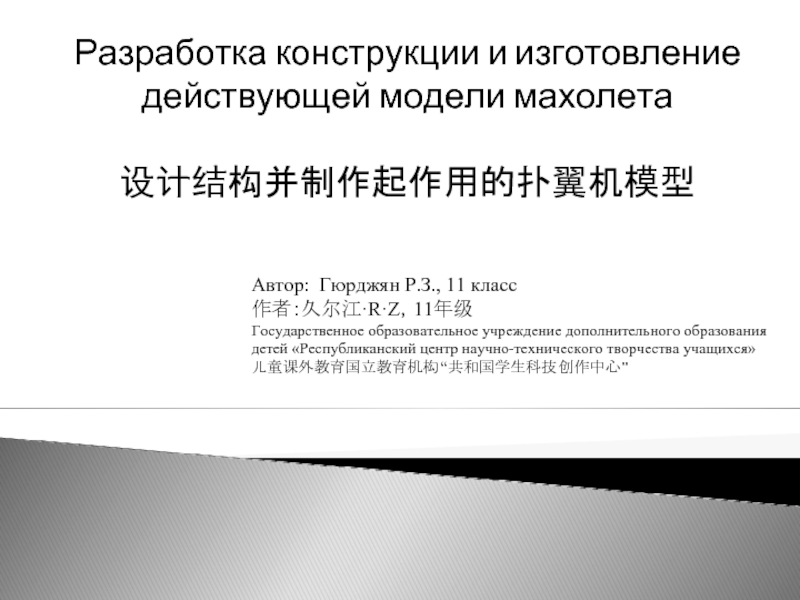- Главная
- Разное
- Дизайн
- Бизнес и предпринимательство
- Аналитика
- Образование
- Развлечения
- Красота и здоровье
- Финансы
- Государство
- Путешествия
- Спорт
- Недвижимость
- Армия
- Графика
- Культурология
- Еда и кулинария
- Лингвистика
- Английский язык
- Астрономия
- Алгебра
- Биология
- География
- Детские презентации
- Информатика
- История
- Литература
- Маркетинг
- Математика
- Медицина
- Менеджмент
- Музыка
- МХК
- Немецкий язык
- ОБЖ
- Обществознание
- Окружающий мир
- Педагогика
- Русский язык
- Технология
- Физика
- Философия
- Химия
- Шаблоны, картинки для презентаций
- Экология
- Экономика
- Юриспруденция
Seminar_3_SATheory_2003 презентация
Содержание
- 1. Seminar_3_SATheory_2003
- 2. Philosophy of Language Aristotel ‘s concept to language
- 3. Language function Leibniz, Frege, Russel, Wittgenstein, Carnap:
- 4. Speech Act Theory by J. Austin J.
- 5. Constatives and performatives Constative should be true
- 6. Conditions for performative appropriate functioning Uttering of
- 7. Speech Act Structure Locutionary act – the
- 8. Speech Act Classification by John Austin Verdictives:
- 9. John Searle’s Speech Act Structure
- 10. Searle’s Speech Act Structure (continued)
- 11. Speech Act Classification by John Searle Assertives:
- 12. Direct and Indirect Speech Act Distinction between
- 13. Philosophical and linguistic importance of SA Theory
- 14. SA Theory and Linguistics SAT made a
- 15. PAUL GRICE (1913-1988) British philosopher, famous for
- 16. Cooperative Principle Cooperative principle of communication in
- 17. Grice's Maxims
Слайд 2Philosophy of Language
Aristotel ‘s concept to language studies was to study true
or false sentences - propositions;
Thomas Reid described utterances of promising, warning, forgiving as “social operations” or “social acts”;
He believed that human’s language’s primary purpose is to express these social operations of the mind;
Thomas Reid described utterances of promising, warning, forgiving as “social operations” or “social acts”;
He believed that human’s language’s primary purpose is to express these social operations of the mind;
Слайд 3Language function
Leibniz, Frege, Russel, Wittgenstein, Carnap: understanding the structure of language
could illuminate the structure of reality;
Many thinkers believed that the main language function is to “describe some state of affairs” or “to state some facts;
Many thinkers believed that the main language function is to “describe some state of affairs” or “to state some facts;
Слайд 4Speech Act Theory by J. Austin
J. Austin “How to do things
with words”, 1962;
Language is not only a system of representation; We perform all sorts of speech acts besides making statements;
Wittgenstein conflated meaning and use; Austin distinguished the meaning of the words from the speech acts;
Austin focused on explicit performative utterances - “I appologize”; “I promise” etc.which are neither true nor false;
Language is not only a system of representation; We perform all sorts of speech acts besides making statements;
Wittgenstein conflated meaning and use; Austin distinguished the meaning of the words from the speech acts;
Austin focused on explicit performative utterances - “I appologize”; “I promise” etc.which are neither true nor false;
Слайд 5Constatives and performatives
Constative should be true or false;
Performatives have value of
hapiness/unhappiness (felicitous or infelicitous); the criterion for felicitous is that the circumstances in which it is uttered should be appropriate;
Слайд 6Conditions for performative appropriate functioning
Uttering of particular words by particular people
in particular circumstances;
A conventional procedure must be carried out correctly and completely;
There is convention that the participants must have certain thoughts, feelings and intentions;
Any participant must behave in a certain way;
A conventional procedure must be carried out correctly and completely;
There is convention that the participants must have certain thoughts, feelings and intentions;
Any participant must behave in a certain way;
Слайд 7Speech Act Structure
Locutionary act – the process of saying itself;
Illocutionary act
– the intention of saying smth;
Perlocutionary act – the effect of saying smth;
locutionary, illocutionary, perlocutionary force;
Perlocutionary act – the effect of saying smth;
locutionary, illocutionary, perlocutionary force;
Слайд 8Speech Act Classification
by John Austin
Verdictives: giving a verdict, estimate, appraisal, finding
Excersitives:exercising
of power, rights or influence, advising, warning
Commissives: promising or undertaking, they commit you to doing something;
Behavitives: which have to do with social behaviour and attitudes, apologizing, congratulating, commending, condoling, cursing;
Expositives: I argue, I concede, I illustrate – could be classed as metalinguistic;
There could be marginal cases, they could overlap.
Commissives: promising or undertaking, they commit you to doing something;
Behavitives: which have to do with social behaviour and attitudes, apologizing, congratulating, commending, condoling, cursing;
Expositives: I argue, I concede, I illustrate – could be classed as metalinguistic;
There could be marginal cases, they could overlap.
Слайд 9
John Searle’s Speech Act Structure
1. Utterance act: uttering words (morphemes, sentences).
2.
Propositional act: referring and predicating.
(a) Will Peter leave the room?
(b) Peter will leave the room.
(c) Peter, leave the room.
(d) Would that Peter left the room
(a) Will Peter leave the room?
(b) Peter will leave the room.
(c) Peter, leave the room.
(d) Would that Peter left the room
Слайд 10
Searle’s Speech Act Structure (continued)
3. Illocutionary Acts: questions, statements, orders etc.
(many utterances contain indicators of illocutionary force – word order, stress, punctuation, mood of the verb, performative verbs);
4. Perlocutionary Acts: persuading, getting smb. to do smth. (results of speech act);
4. Perlocutionary Acts: persuading, getting smb. to do smth. (results of speech act);
Слайд 11Speech Act Classification
by John Searle
Assertives: suggesting, putting forward, concluding, boasting etc.,
Directives:asking
ordering, requesting, advising etc.;
Commissives:promising, planning,vowing, betting, opposing;
Expressives: thanking, appologising, welcoming, deploring;
Declarations: You are fired, I swear, I beg you;
Commissives:promising, planning,vowing, betting, opposing;
Expressives: thanking, appologising, welcoming, deploring;
Declarations: You are fired, I swear, I beg you;
Слайд 12Direct and Indirect Speech Act
Distinction between speaker’s utterance meaning and speaker’s
meaning;
Literal utterance – speaker’s and utterance meaning coincide;
Metaphorical utterance – a speaker says S is P, but means S is R;
Open-ended metaphorical utterance – S is P, but meanings could be infinite;
Dead metaphor –the utterance has the meaning that used to be its metaphorical one;
Ironical utterance – speaker means the opposite of what the sentence means;
Literal utterance – speaker’s and utterance meaning coincide;
Metaphorical utterance – a speaker says S is P, but means S is R;
Open-ended metaphorical utterance – S is P, but meanings could be infinite;
Dead metaphor –the utterance has the meaning that used to be its metaphorical one;
Ironical utterance – speaker means the opposite of what the sentence means;
Слайд 13Philosophical and linguistic importance of SA Theory
Philosophy of Language – SAT
underscores the importance of the distinction between language use and linguistic meaning;
Exploration into the nature of linguistic knowledge;
Exploration into the nature of linguistic knowledge;
Слайд 14SA Theory and Linguistics
SAT made a great contribution to linguistic analysis;
Analysis of utterance from the perspective of their function rather than form;
Contributed to the development of Discourse analysis, Pragmatics;
Слайд 15PAUL GRICE
(1913-1988)
British philosopher, famous for his innovative work in philosophy of
language;
His Theory of Implicature is important contribution to pragmatics;
Conversational Implicature - meaning beyond the literal sense which must be inferred from non-linguistic features of a conversational situation together with general principle of communication and cooperation;
His Theory of Implicature is important contribution to pragmatics;
Conversational Implicature - meaning beyond the literal sense which must be inferred from non-linguistic features of a conversational situation together with general principle of communication and cooperation;
Слайд 16Cooperative Principle
Cooperative principle of communication in “Logic and Conversation” 1975;
Cooperative principle
is a norm governing all cooperative interactions among humans:
“Make your conversational contribution what is required, at the stage at which it occurs, by the accepted purpose or direction of the talk exchange in which you are engaged”
“Make your conversational contribution what is required, at the stage at which it occurs, by the accepted purpose or direction of the talk exchange in which you are engaged”
Слайд 17
Grice's Maxims
1. The maxim of quantity
“Make
your contribution as informative as required”
“Don’t make your contribution more informative that is required”
2.The maxim of quality: Be truthful;
“Don’t say what you believe to be false”
“Don’t say what you lack adequate evidence for”
3. The maxim of relation
“Be relevant”
4. The maxim of manner: “Be perspicuous”
“Avoid obscurity of expression”
“Avoid ambiguity”
“Be brief”
“Be orderly”
“Don’t make your contribution more informative that is required”
2.The maxim of quality: Be truthful;
“Don’t say what you believe to be false”
“Don’t say what you lack adequate evidence for”
3. The maxim of relation
“Be relevant”
4. The maxim of manner: “Be perspicuous”
“Avoid obscurity of expression”
“Avoid ambiguity”
“Be brief”
“Be orderly”
